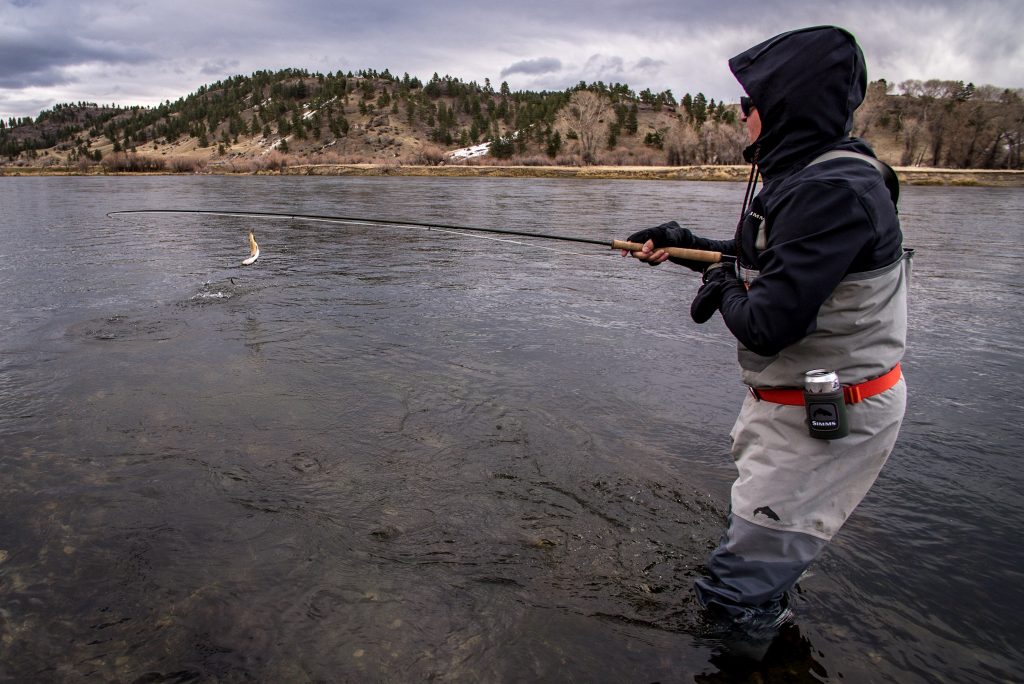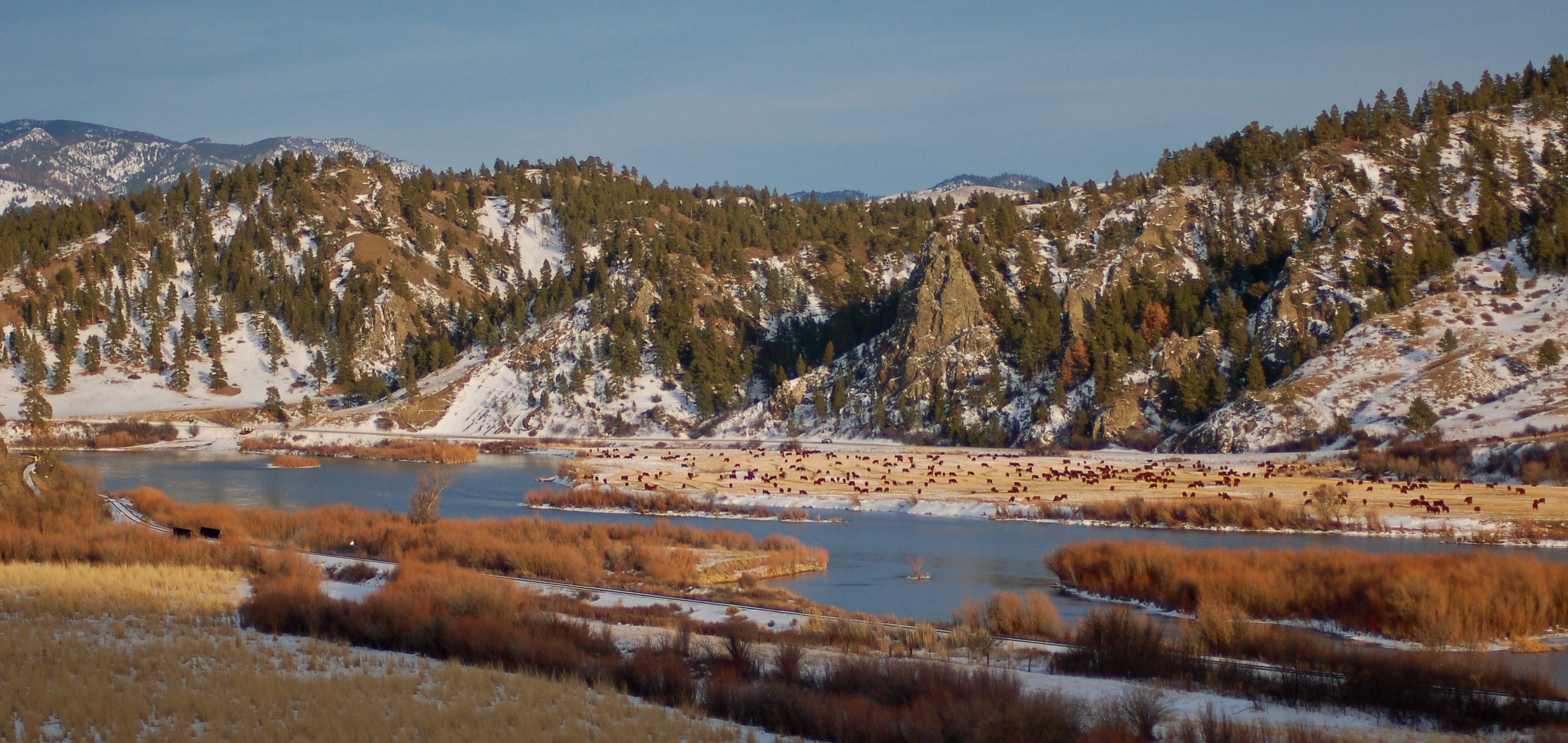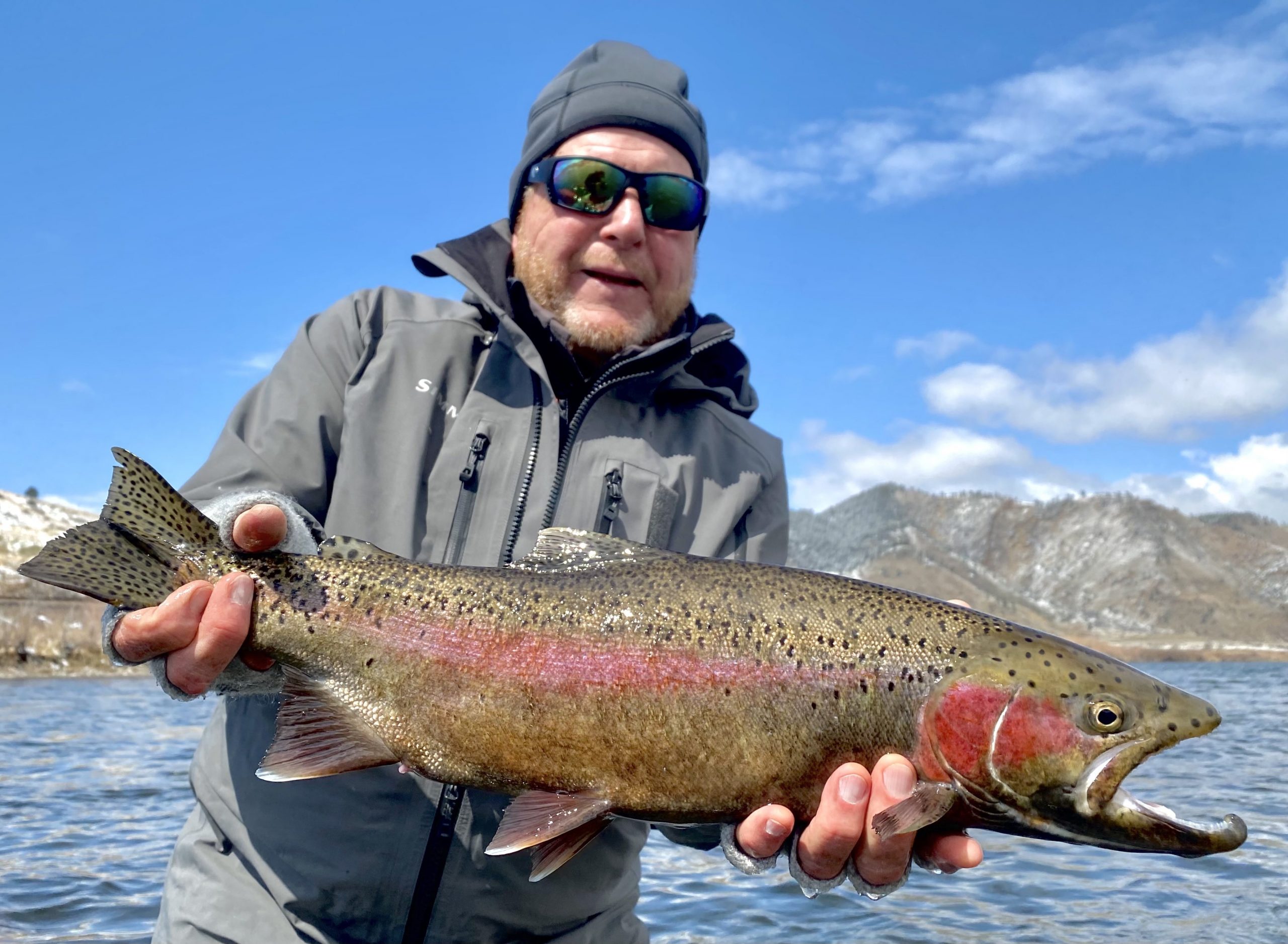You should have a plan for setting the hook. When we dry fly fish we lift slow and high. In the Tarpon boat is an aggressive strip set. Bobber lobbers hit ‘em hard and fast.
Fishing a swung fly with a Spey rod is no different. You need a plan.
It’s a simple one, but many trout fisherman find it difficult to adapt. I see a lot of straight-up, high tip hook sets out on the river. And I see a lot of those fish come unpinned.
When you are swinging a fly down and across, you should prepare for the hookset by leading you line with the rod tip, not following it. Lead it gently, as if your about to pull the fly, and keep your rod tip low. Your rod tip should be below horizontal.
When a fish grabs, there will be a moment when you may have to make a decision about timing. Steelhead anglers will generally let the fish turn and take a little line before they come tight. Works great on Steelhead, but not on Trout. I’m not going to describe every kind of take you can get from a Trout, but it will range from takes you literally cannot feel to explosive strikes that can burn your finger. On those lighter takes you may want to let the fish take a bit before the hookset.
So, now you’ve decided to set the hook on a fish. You’re pretty tight to the fish already because you’re leading that swing (if you’re following your swing with the tip you may not even feel the take). Your rod tip is low and you should have the line under your finger on the grip, and your stripping hand on the line.
In one smooth motion you should sweep your rod quickly to the bank (keeping the tip low), and perform a long strip strike. If it’s a small fish or a fish that comes at you continue stripping.. long aggressive strips.
You should be hooked up now. Time to keep that rod low and towards the bank. Begin the fight in that position you finished your hookset on. As the battle progresses you can change angles however you need.




